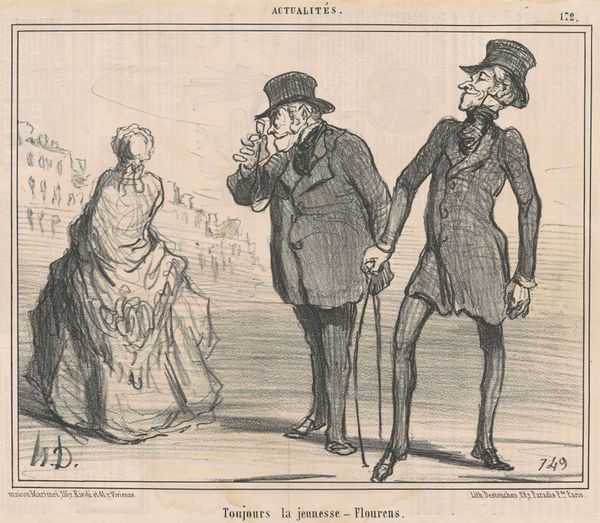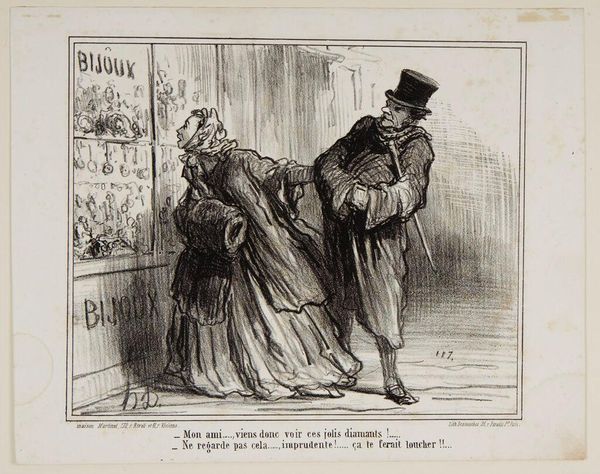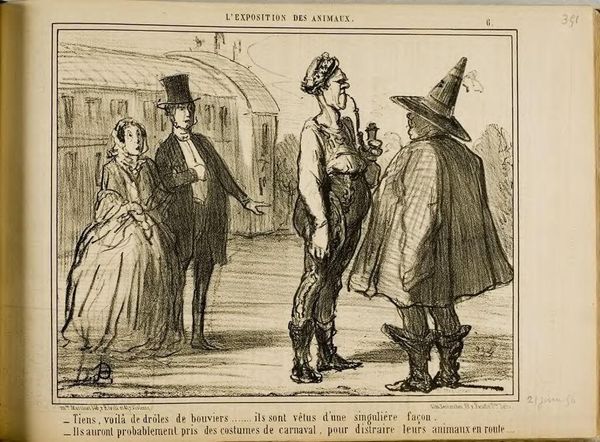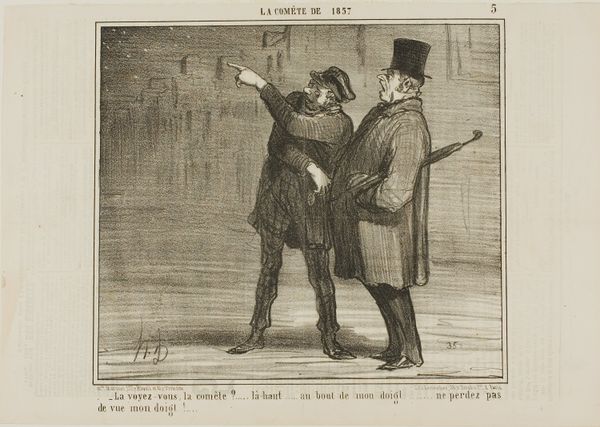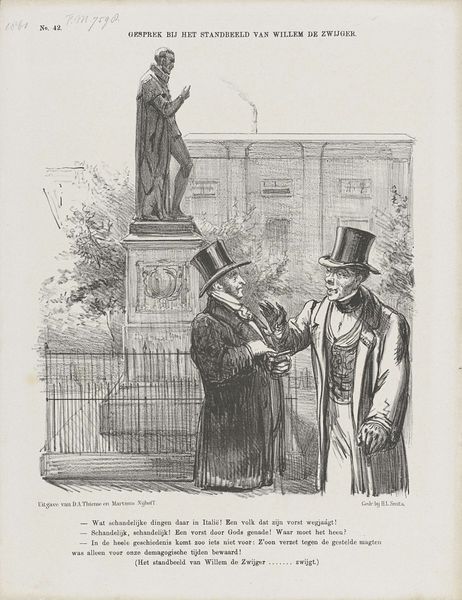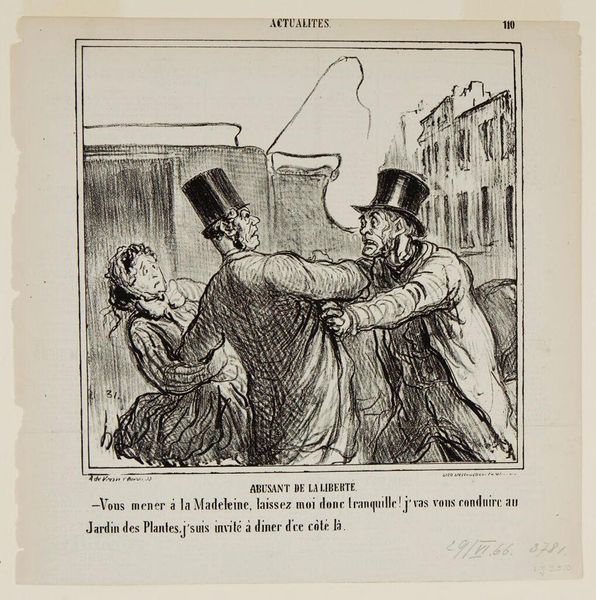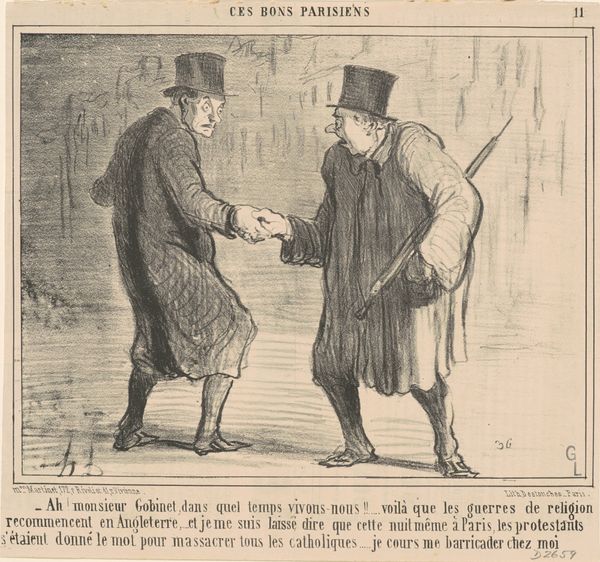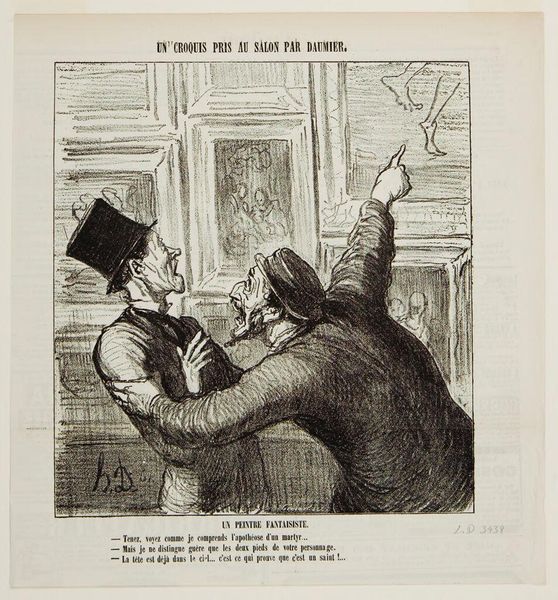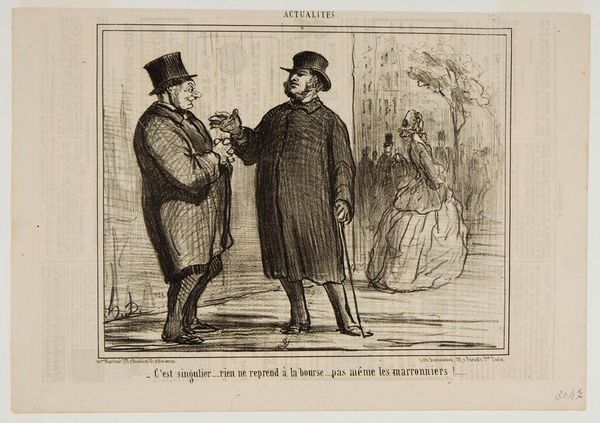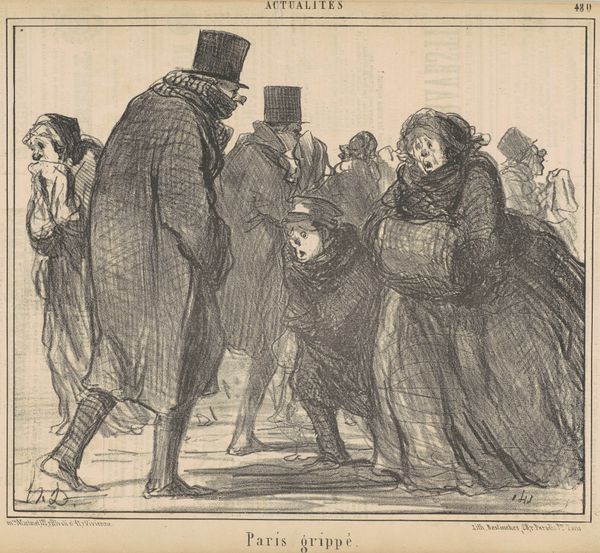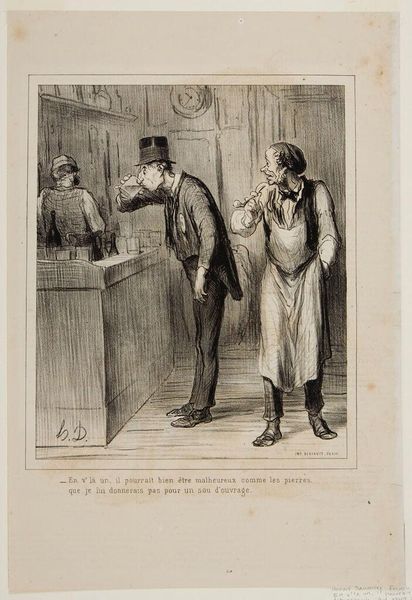
drawing, lithograph, pencil
#
portrait
#
pencil drawn
#
drawing
#
lithograph
#
caricature
#
pencil
#
genre-painting
#
realism
Dimensions: 23.4 x 28.4 cm
Copyright: Public domain
Curator: Immediately, I’m struck by how this piece uses exaggeration to comment on something very real – fear. There’s a preposterousness that underlines a shared anxiety. Editor: That makes sense when we consider this lithograph by Honoré Daumier, titled "Jacques Babinet," dates to 1857. What appears to be a rather harsh rendering actually tells a story of its time, both in material and subject. Curator: Tell me more about Daumier’s materials and social context. What was he getting at here? Editor: Lithography was a relatively new, affordable printmaking method, enabling mass distribution of imagery. Daumier used it to publish social commentary, particularly lampooning the bourgeoisie and political figures. We need to remember here the means of production reflect his critique; it’s accessible for the working classes whom he’s implicitly defending. Curator: It also allows his work to serve almost like a collective release, the anxiety of the impending extinction of the Sun shared amongst them all. It resonates because this existential worry touches on deep fears around permanence, about light versus darkness in society as much as nature. The lanterns almost become symbolic. Editor: They suggest a lack of faith in technology. People were, then as now, anxious over scientific predictions gone awry. I mean, think about what Babinet's pronouncements are doing to people: forcing them to alter their daily lives simply because an educated man says the Sun is going to disappear one day! Curator: But notice Daumier places them as if these caricatures were ordinary people walking, and thus gives that feeling its importance: what if all fades away when people like you and me don't have enough agency to stop it. Editor: That very democratic outlook allowed Daumier to question established hierarchies through widely available imagery. I’m most drawn to the lithographic crayon; each individual mark bears Daumier’s intentions. He translated complex emotional ideas into a physically accessible format that resonated strongly. Curator: He tapped into archetypes here, and by exaggerating them he reminded people to watch those figures because they influence, however small, their way of seeing. Editor: Exactly! He captured the ethos of an era in a way only an experienced materialist could: Daumier distilled social complexity into accessible art.
Comments
No comments
Be the first to comment and join the conversation on the ultimate creative platform.
